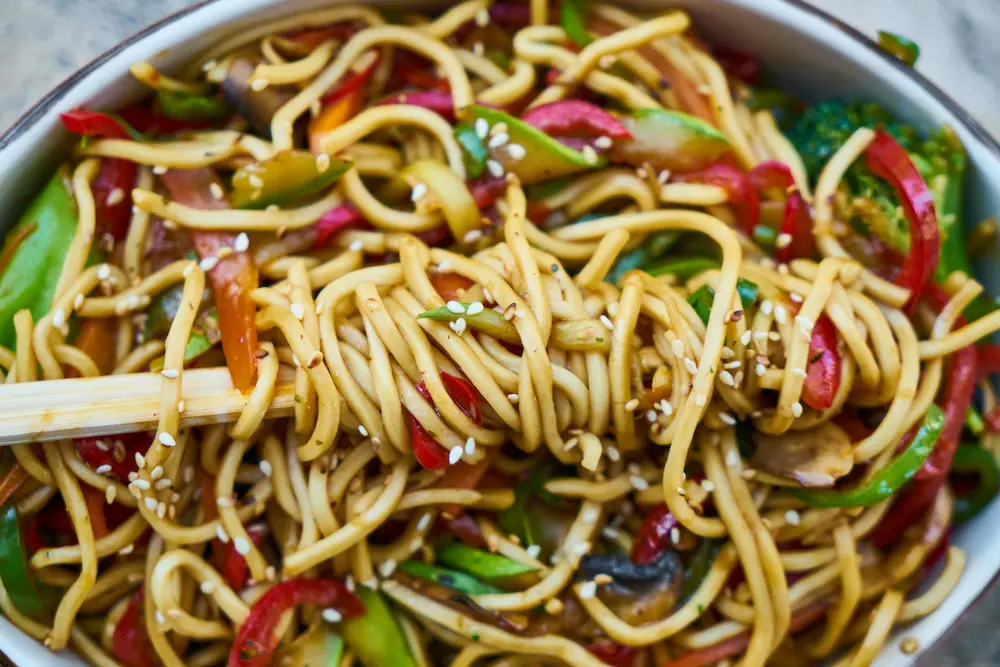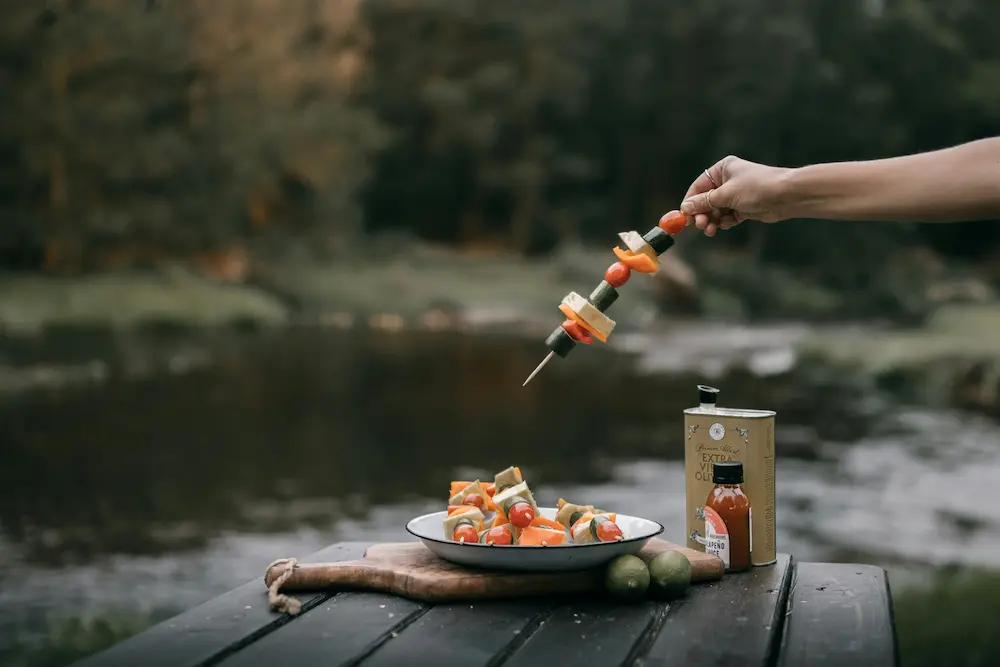Transitioning to a vegan lifestyle can be empowering, exciting, and even life-changing. But for many beginners, it’s also easy to fall into common traps that can sabotage your progress or make you feel discouraged. Whether you’re going vegan for health, ethics, or the environment, understanding the most common beginner vegan mistakes can save you a lot of confusion, cravings, and setbacks.
In this post, we’ll cover the top mistakes people make when starting a vegan diet—and most importantly, how to avoid them with simple, realistic solutions.
1. Cutting Out Animal Products Without Planning Substitutes
One of the most common beginner vegan mistakes is going cold turkey—removing all animal products without thinking through what to eat instead. While enthusiasm is great, simply subtracting meat, dairy, and eggs from your meals can leave you hungry and unsatisfied.
✅ What to do instead:
Plan your meals with balanced plant-based protein sources like lentils, beans, tofu, tempeh, and quinoa. Incorporate healthy fats (avocado, tahini, nuts), and don’t forget complex carbs (sweet potatoes, oats, brown rice). Use a free vegan meal plan or tracker to help organize your grocery list and ensure you’re meeting your nutritional needs.
2. Not Eating Enough Calories
Another major mistake when starting a vegan diet is under-eating. Whole plant foods are naturally lower in calories than meat or cheese, which can unintentionally create a calorie deficit and leave you feeling drained, weak, or constantly hungry.
✅ What to do instead:
Track your food for the first few weeks using an app like Cronometer. Make sure you’re eating enough to fuel your day—especially if you’re active. Include calorie-dense foods like peanut butter, hummus, bananas, and starchy vegetables in your daily meals to stay energized.

3. Thinking All Vegan Food Is Automatically Healthy
Just because a product says “vegan” on the label doesn’t mean it’s good for you. This is one of those sneaky beginner vegan mistakes that can derail your health goals. Vegan junk food is real: plant-based ice cream, cookies, chips, and processed meats are often high in oils, sugar, and sodium.
✅ What to do instead:
Stick to mostly whole foods—vegetables, fruits, legumes, grains, seeds, and nuts. Enjoy vegan treats in moderation, and when you do buy packaged foods, read the ingredients. Aim for short ingredient lists and minimal additives.
4. Ignoring Key Nutrients Like B12 and Iron
One of the biggest rookie errors when starting a vegan diet is not learning about essential nutrients. Vitamin B12, iron, omega-3s, calcium, and zinc are all important and can be less available in a standard vegan diet unless you’re mindful.
✅ What to do instead:
- B12: Take a weekly supplement or eat fortified foods (plant milks, nutritional yeast).
- Iron: Combine plant iron (from beans, greens, tofu) with vitamin C (citrus, bell peppers) to boost absorption.
- Omega-3s: Add flaxseeds, chia seeds, or algae-based supplements.
- Calcium & Zinc: Include foods like fortified plant milk, tahini, and pumpkin seeds regularly.
Consult with a registered dietitian or doctor if you’re unsure about your levels.
5. Not Learning How to Cook Vegan Food
You don’t need to be a chef, but knowing how to prepare simple, satisfying vegan meals at home is a game-changer. Relying too much on prepackaged or frozen vegan meals not only gets expensive but often lacks freshness and nutrients.
✅ What to do instead:
Start small with easy recipes: overnight oats, stir-fried veggies with tofu, lentil soups, and grain bowls. Batch cook staples like rice, beans, and roasted vegetables to mix and match during the week. There are endless free vegan cooking tutorials online, so pick a few and practice!
6. Being Too Restrictive or “Perfect”
Many people trying to “do vegan right” get stuck in an all-or-nothing mindset. They feel like they’ve failed if they accidentally eat something non-vegan, or they fear being judged by others. This perfectionism can lead to burnout or quitting altogether.
✅ What to do instead:
Give yourself grace. If you slip up, it’s not the end—it’s part of the learning curve. Focus on progress, not perfection. Celebrate your wins, even small ones, like finding a new go-to vegan snack or replacing your coffee creamer. Being flexible and forgiving keeps you on the path long term.

7. Not Telling Your Support System or Asking for Help
Switching your eating habits can feel isolating if no one around you understands. One common beginner vegan mistake is trying to do everything in secret—especially if you’re afraid of criticism or awkward conversations.
✅ What to do instead:
Tell your friends and family why you’re making this change. Share your favorite meals with them and invite them to try plant-based dishes with you. Join online vegan communities or follow vegan creators for support, motivation, and meal inspiration.
Bonus Tip: Don’t Just Focus on the Food
Being vegan is more than what you eat—it’s about mindset, values, and lifestyle. Take time to educate yourself about the impact of your choices on animals, the environment, and your health. This helps keep you grounded and inspired, especially when it gets challenging.
Avoiding Beginner Vegan Mistakes Is About Mindful Progress
Starting a vegan diet doesn’t have to be overwhelming. With a little preparation and awareness, you can avoid the most common beginner vegan mistakes and set yourself up for a successful, fulfilling journey.
Remember: it’s okay to ask questions, experiment with new meals, and take it one step at a time. Veganism is not about being perfect—it’s about doing your best with what you have, where you are.
Helpful Resources to Keep You on Track:
🌱 Free vegan meal planners (search online or download from vegan blogs)
📚 Books: “How Not to Die” by Dr. Michael Greger, “The Vegan Starter Kit” by Dr. Neal Barnard
📱 Apps: Cronometer, HappyCow, Daily Dozen
👩🍳 YouTube Channels: Pick Up Limes, Rainbow Plant Life, Plant Based News
Sample 1-Day Beginner-Friendly Vegan Meal Plan
| Meal | What to Eat |
|---|---|
| Breakfast | Creamy overnight oats with chia seeds, banana, peanut butter, and oat milk |
| Lunch | Quinoa salad with roasted sweet potato, chickpeas, avocado, and tahini dressing |
| Snack | A handful of almonds + a piece of fruit (like an apple or orange) |
| Dinner | Red lentil curry with rice and steamed broccoli |
| Optional Treat | A square of dark chocolate or homemade vegan energy bites |
Tip: This meal plan includes protein, healthy fats, fiber, and key nutrients to keep your energy steady and your cravings low—all while avoiding those beginner vegan mistakes.
👉 If you find this sample helpful, you’ll love my 4-Week Vegan Meal Plan designed specifically for beginners—it’s simple, structured, and takes the guesswork out of plant-based eating!

Save These Simple Vegan Swaps
When starting a vegan diet, it’s helpful to have go-to swaps that make transitioning easier:
| Instead of | Try This |
|---|---|
| Cow’s milk | Oat, soy, almond, or cashew milk |
| Chicken | Tofu, tempeh, soy curls, or jackfruit |
| Cheese | Nutritional yeast, vegan cheese, hummus |
| Ground beef | Lentils, TVP, mushrooms, walnuts |
| Mayonnaise | Vegan mayo or mashed avocado |
| Butter | Olive oil, avocado oil, vegan butter |
| Eggs (in baking) | Chia eggs, flax eggs, mashed banana |
Keep this list on your fridge while grocery shopping or meal planning!
Frequently Asked Questions (Vegan Beginner Q&A)
Q1: Do I need to take supplements when starting a vegan diet?
A: Yes, particularly vitamin B12. While a well-planned vegan diet can meet most of your nutritional needs, B12 is not reliably found in plant foods. Many vegans also choose to supplement with vitamin D (especially in winter), omega-3 (algae-based), and iron depending on their blood work. It’s always smart to get a check-up and talk to a health professional.
Q2: Can I go vegan gradually, or do I need to switch overnight?
A: You can go at your own pace. Some people thrive with a full switch, while others benefit from gradually replacing meals. The key is consistency, not speed. Try “Meatless Mondays” or making one vegan meal per day to ease in.
Q3: Will I get enough protein on a vegan diet?
A: Yes! You can get plenty of protein from legumes (like lentils and chickpeas), soy products (tofu, tempeh), whole grains (quinoa, oats), nuts, seeds, and even vegetables. Aim for a variety and include protein in every meal for best results.
Q4: What if I live with non-vegans?
A: Communication is key. Focus on meals that can be easily modified (like taco night with beans for you and beef for others). Batch cook your own meals when needed, and invite others to try your vegan dishes—they might love them!
Q5: Is it more expensive to eat vegan?
A: It depends on what you buy. Processed vegan foods and specialty items can be pricey, but whole-food staples like rice, beans, potatoes, and frozen veggies are budget-friendly. Buying in bulk, cooking at home, and meal planning will save you money.
Quick Recap: 7 Beginner Vegan Mistakes to Avoid
- Removing animal products without replacement
- Not eating enough calories
- Thinking all vegan food is healthy
- Ignoring key nutrients
- Not learning basic vegan cooking
- Being too strict or expecting perfection
- Lacking support or staying silent
Avoiding these early pitfalls makes starting a vegan diet not only easier but genuinely enjoyable.

